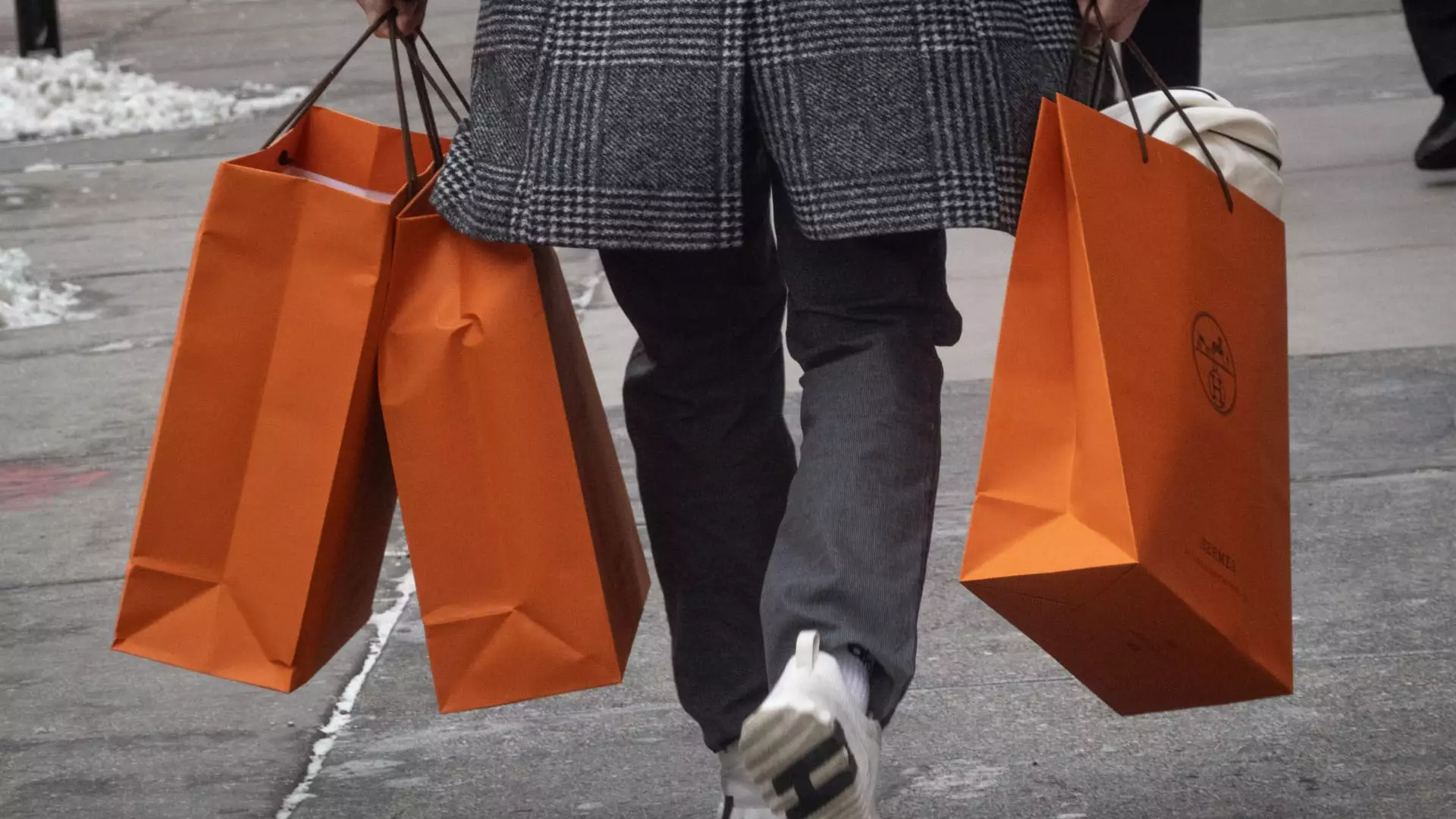The European luxury goods sector has long captivated consumers with its exquisite craftsmanship and rich heritage. However, looming U.S. tariffs are casting a pall over this beloved industry, a reality epitomized by the recent decline in shares of prestigious brands like LVMH, Richemont, Kering, and Hermes. While these companies have historically enjoyed a robust market presence, the backdrop of global economic instability suggests that their reign may face a precarious challenge. The announced tariffs, even with President Trump’s temporary reprieve and reduced rates, undermine the very foundation upon which these brands are built—their exclusive allure and commitment to superior quality.
As luxury brands navigate these tumultuous waters, the paradox of high-end fashion becomes glaringly evident: for all their prestige, they are vulnerable to broader economic forces that could drag down affluent consumers. Traditionally, the made-in-Europe label has been a hallmark, but as production costs rise, the question becomes: at what point does the consumer’s luxury experience cease to be worth the price tag? Analysts fear that even the wealthiest among us could find price hikes burdensome if the global economy enters a downturn.
The Recession Cloud: Signals from the Market
According to JPMorgan, the likelihood of a U.S. recession has spiked to an alarming 60%, casting a dark cloud over not just luxury stocks but the broader economic landscape. Jamie Dimon, the bank’s CEO, recently noted that market instability has moved the needle towards a recession being “likely.” This sentiment echoes through the luxury sector, with experts like Adam Cochrane from Deutsche Bank cautioning that weaker stock markets could stymie luxury demand recovery.
The reality is stark: although luxury brands constitute a relatively small percentage of total sales derived from the American market—ranging between 15% and 30%—the importance of that market has magnified in recent years. As analysts pointed out, with waning sales in China, the U.S. was increasingly viewed as a vital growth driver. However, the dawn of new tariffs, particularly the staggering 125% imposed on certain luxury goods, may blunt that growth just as it seemed poised to rebound.
Potential Consequences: The Ripple Effect on Demand
Luca Solca, an analyst known for his insights into global luxury goods, underscored that the immediate impact of tariffs may appear negligible. Yet, his warning about the cascading effects of such policies is dire. The potential for a sharp global recession could unsettle stock markets, leading to a downturn in luxury consumption. If the upper echelon of consumers—who would typically weather economic turbulence better—begins to tighten their purse strings, the implications for high-end fashion could be devastating.
The dynamics of consumer behavior in response to economic pressure are complex. While affluent shoppers often seem insulated from market fluctuations, psychological factors play a critical role. As sentiment shifts and economic forecasts dim, the luxury experience morphs from an aspirational escape to a calculated expenditure. This fear of future financial inadequacy can extend into the luxury sector, causing even the wealthiest to reconsider their spending priorities.
The Anomaly: Temporary Upswings vs. Long-Term Trends
Just as analysts had begun to detect flickers of recovery in the luxury sector, buoyed by optimistic fourth-quarter results, this momentum seems precarious in light of recent developments. Deutsche Bank’s Cochrane cautioned that the uptick might merely be an anomaly rather than a sustainable trend. He drew attention to the possibility that third quarter might not have been a nadir, prompting a downward revision of growth expectations.
Citi echoed this sentiment, suggesting that the recent tariff implications pose a “significant threat to the future of U.S. luxury demand.” Among the brands considered most resilient in the face of these challenges—Hermes and Burberry—there lie others like Richemont and Moncler that may struggle to maintain their market share.
Rebranding the Future: Luxury’s Next Move
In navigating these uncertain waters, European luxury brands must reconsider their strategies. Perhaps it’s time to reassess the balance between maintaining high standards of craftsmanship and embracing efficient manufacturing innovations. As we forge ahead in this unpredictable economic environment, these brands may need to engage in a dialog that interlaces heritage with modernity.
Furthermore, creating a stronger connection with consumers—beyond the price tag associated with luxury—may hold the key to survival. Brands can leverage storytelling, sustainability, and community engagement while counteracting the fear that comes with economic instability. By creating a narrative that aligns with evolving consumer values, luxury goods can retain their allure even amidst uncertainty.
While the luxury sector may seem impervious at first glance, it is essential for these brands to adapt proactively as they face potential economic downturns. By harnessing their rich heritage and coupling it with innovative strategies, they can weather the storm and emerge more robust in the end.

